As one of M.U.S.T.’s 23rd anniversary activities, the first China-Portugal Forum on Coastal Environment and Innovative Technology for Sustainable Development (CPCET 2023) sponsored by M.U.S.T., co-organized by Sands China, funded by the Education Fund of the Macao SAR Government, supported by the Economic and Technological Development Bureau of the Macao SAR Government, the Macao Science and Technology Development Fund, the International Association for Hydro-Environment Engineering and Research, and the Pearl River Water Resources Commission of the Ministry of Water Resources, successfully started on the morning of March 28th, 2023. The forum focused on two core themes: climate change adaptation and coastal environment/resilience. It set up keynote lectures, invited lectures, poster sessions, and field visits from the 28th to the 31st of March. The forum invited many scholars, experts, and representatives from well-known universities, academic institutions, and enterprises from Portugal and Lusophone countries, mainland China, Hong Kong, Macao, and other regions.
On the afternoon of March 28th, the forum was divided into two parts: “Climate Change Adaptation: Keynote Lectures” and “Innovation and Entrepreneurship Meeting Point: Keynote Lectures and Poster Session”. The first part of the forum was chaired by Dr. Helena Alegre, Head of the Hydraulic and Environment Department of the National Laboratory of Civil Engineering (LNEC). The first lecture was delivered by Professor Johnny Chan, Emeritus Professor at the City University of Hong Kong and Director of the Shanghai Typhoon Research Institute. Professor Chan emphasized that the effects of climate change resulting from the excessive burning of fossil fuels have been ongoing for 150 years. As a result, extreme weather events have become more frequent, causing significant economic losses. He stressed the need for active responses to the challenges of climate change.
Professor Wing Huen Ip, Academician of Academia Sinica, National Central University, Taiwan, China, shared several scientific initiatives characterized by Macao’s cultural heritage. He took the countries and regions along the routes explored by great navigators, like Vasco da Gama and He Zheng, pointing out that climate change and sea level rise have seriously threatened the coastline and economic development. Macao can take the lead in promoting international cooperation, especially among Lusophone countries and regions. Professor Philip Liu, Academician of US NAE, Distinguished Professor at the National University of Singapore, pointed out in his report that tides and climate change caused by sea level rise are significant drivers for sea level change. When conducting a tsunami hazard assessment, it is necessary to consider both the uncertainty of the tsunami source and the uncertainty of the tidal stage and the sea level at the time of tsunami occurrence. Professor Ming Li, Horn Point Laboratory, Center for Environmental Sciences, University of Maryland, USA, focused on water quality issues in estuaries and coastal waters. Two specialists from Ove Arup & Partners Hong Kong Limited, Mr. Terence Leung, Associate Director, and Dr. Ander Chow, Maritime specialist, introduced the meteorological and oceanographic conditions, hydrodynamic mechanisms, and wave effects of the Pearl River Estuary and the central waters. They also analyzed the impact of artificial islands. Professor Xiaotao Cheng from the China Institute of Water Resources and Hydropower Research pointed out that the strategy to enhance urban flood resilience is not to build cities that cannot be flooded, but cities that are not afraid of flooding.
Finally, Professor Johnny Chan provided a summary of the risks and opportunities associated with climate change. Attending guests, industry representatives, teachers, and students discussed extensively and had a vibrant and interactive exchange of ideas.
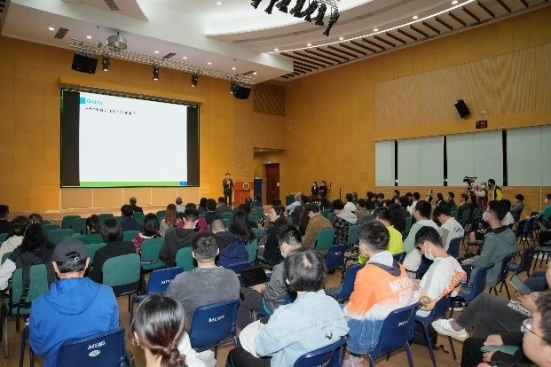
Scene at the Climate Change Adaptation Keynote Lectures
In the second part of the forum, the first talk was delivered by Dr. Alex Weng Keong Che, Head of the Technology Department of the Macao Economic and Technological Development Bureau. He pointed out that Macao has played a key role in connecting China with Portuguese-speaking countries. The recently established Centre for Science and Technology Exchange and Cooperation between China and Portuguese-Speaking Countries has further facilitated scientific and technological exchanges. Professor Paulo Quaresma, Vice-Rector of the University of Évora, Portugal, introduced some specific examples of artificial intelligence applications in the context of sustainable development, providing new ideas and methods for incorporating innovative elements into future applications of artificial intelligence in the areas of environment and climate change. Mr. Fred Sheu, National Technology Officer of Microsoft Hong Kong, introduced the fundamentals of AI technology, Microsoft Azure OpenAI, and generative AI models such as GPT-3, DALLE, and Codex. Dr. Helena Alegre, Head of the Hydraulics and Environment Department, National Laboratory for Civil Engineering (LNEC), thought that society needs more resilient, sustainable, and financially viable solutions to improve and create relevant science and technology, governance models, and business models.
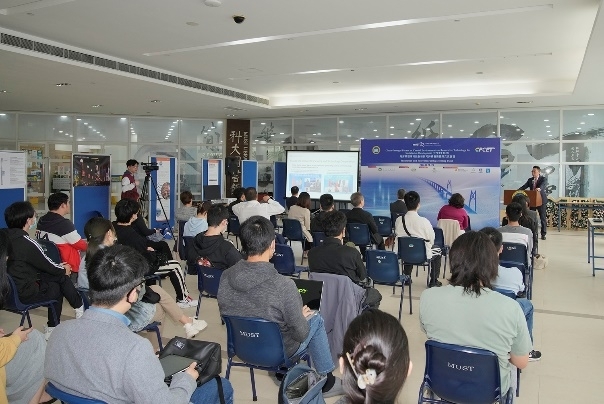
Scene at the Innovation and Entrepreneurship Meeting Point
On the morning of March 29th, the second session of "Coastal Environment/Resilience: Keynote Lectures", was chaired by Professor Adrian W.K. Law from the Nanyang University of Technology, Singapore. Dr. Helena Alegre, Head of the Hydraulics and Environment Department of LNEC, presented the first report. She systematically reviewed the cutting-edge research fields and scientific problems related to coastal zone resilience, pointing out the axes of action to enhance coastal resilience, especially for coastal cities. Then, Professor Kenneth Leung, Director of the State Key Lab of Marine Pollution and Chair Professor of Environmental Toxicology and Chemistry at the City University of Hong Kong, vividly introduced the concept of eco-engineered shorelines and their design and construction in Hong Kong. Professor Leung’s team has tested a variety of eco-engineered tiles and designed more eco-friendly and cost-effective alternatives, which hold great potential for widespread application. Professor Rita Carvalho from the Center for Marine and Environmental Science, University of Coimbra, Portugal, introduced the application of computational fluid dynamics (CFD) methods in the design and construction of coastal infrastructure and discussed the potential of CFD approaches to be integrated into larger models, in industries, and applications of environmental protection.
The next invited lectures were chaired by Professor Kenneth Leung. Professor Sung-Uk Choi from Yonsei University, South Korea, gave a report on the impact of hydropeaking flows on the habitat of aquatic animals. He proposed a new operation rule for upstream dams that can effectively regulate the environmental flow and temperature of the habitat, thereby reducing the impact of hydropeaking flows. Professor Adrian W.K. Law from the Nanyang University of Technology, Singapore, reported on a recent study conducted in Singapore that used unmanned aerial vehicles (UAVs) equipped with hyperspectral and multispectral sensors to observe the turbidity and plumes in coastal waters during land reclamation. He pointed out that the challenge of using UAVs in the ocean is positioning. Professor Ramiro Neves, Vice President of the Marine, Environment and Technology Center (MARETEC) at IST, University of Lisbon, Portugal, introduced the MOHID water modeling system developed by MARETEC, and demonstrated its efficient application in the design and construction of coastal infrastructure.
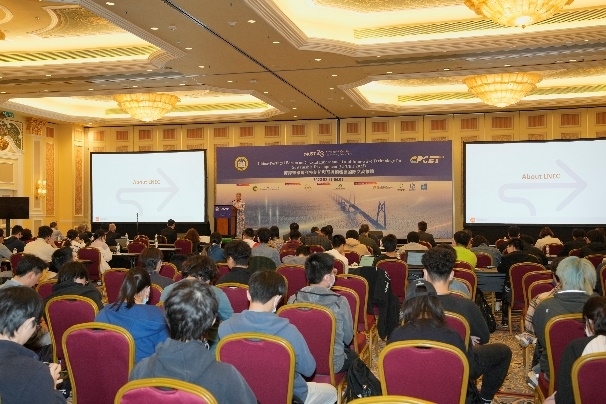
Scene at the Coastal Environment/Resilience
In the afternoon, Professor Jose Maria Grassa, Director of the Ports and Coastal Studies Centre (Spain) and Deputy General Director of the Public Works Studies and Experimentation Centre, was invited to give a keynote speech. He introduced the Iribarren number of waves and emphasized its importance in the application of urban coastal risk assessment. He also proposed some ideas for protecting urban coastlines. Professor Jorge Matos from the University of Lisbon, Portugal, introduced the damage caused by cavitation to hydraulic structures and pointed out that the new technology of chute spillways can effectively reduce drag and reduce the impact of cavitation. Professor Philippe Gourbesville from the China Institute of Water Resources and Hydropower Research reported on the impact of extreme rainfall in Mediterranean countries in recent years and gave some mitigation strategies based on the analysis of the hydrological processes of two major events observed recently. Mr. Yuetao Yi, Deputy Director of the Pearl River Water Resources Commission of the Ministry of Water Resources, introduced a prevention strategy for saltwater intrusion and water supply safety for cities located at Pearl River Estuary. Professor Ana Mendes from the University of Évora, Portugal, elaborated on the legal definition and relevant standards of ecological restoration in international, European, and Chinese laws from the perspective of environmental and ecological protection laws. Dr. Eduardo Yassuda, President of Tetra Tech (Brazil) in South America, introduced some progress in coastal restoration projects in Brazil. Dr. Rita Fonseca, associate professor at the University of Évora, Portugal, gave insight into the complexity of remediating contaminated sediments in coastal areas, as well as the advantages and disadvantages of related restoration options. Dr. Paulo Santos, associate professor at the University of Porto, Portugal, presented some applications of computational fluid dynamics methods to the areas of marine environment and climate change adaption. Finally, Dr. Liu Jiahong, Deputy Director of the Key Laboratory of River Basin Digital Twinning of Ministry of Water Resources, took Beijing Daxing International Airport as an example to analyze urban flood risks under climate change.
On the afternoon of March 29th, the "Innovation and Entrepreneurship Meeting Point" was held simultaneously, and 7 guests from famous universities, the SAR government, and enterprises were invited to share their ideas. First, Professor Pedro Amaral, Vice President of the IST Operations and Corporate Relations at the University of Lisbon, Portugal, discussed how universities should interact with society and generate impact. Professor Chi-Tin Hon, Director of the Research Centre for Epidemic Prediction System, M.U.S.T., shared some of the latest algorithms and their applications to the prediction and early warning of COVID-19. Mr. Liang Cheng, Co-Founder and General Manager of the Zhuhai Yunzhou Intelligence Technology Limited, introduced the latest applications of Unmanned Surface Vessels (USV) in ocean engineering, ocean observation, and maritime safety. Mr. Paul Wang, CEO of All Mighty Limited, presented a science popularization for efficient LED lamps and their huge potential for energy conservation and emission reduction. Mr. Simon Wong, CEO of the Logistics and Supply Chain MultiTech R&D Centre, Hong Kong SAR Government, shared various examples of the latest applied technological research in environmental protection, logistics and transportation, and community services. Dr. Ana Garcia, Director of the Laboratory and Science Manager of the University of Coimbra, Portugal, introduced the concept of blue economy. Lastly, Dr. Eduardo Yassuda once again shared the coastal resilience projects in Brazil.
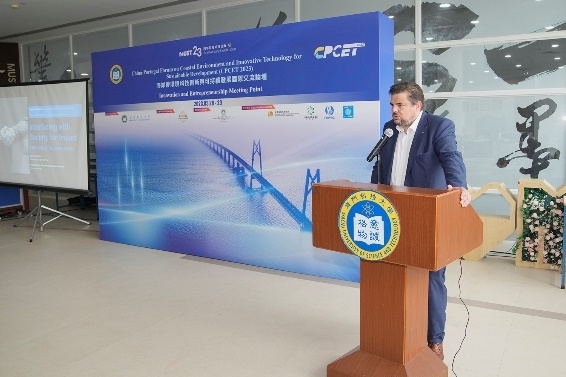
Scene at the Innovation and Entrepreneurship Intersection
On the morning of March 30th, forum guests and faculty members from the Department of Environmental Science and Engineering (DESE) of the Faculty of Innovation Engineering (FIE) visited the National Observation and Research Station of Coastal Ecological Environments in Macao (hereinafter referred to as the Macao National Station). Chair Prof. Joseph Hun-wei LEE, Vice-Chancellor and President of M.U.S.T., delivered a welcome speech. The Macao National Station is the first of its kind outside mainland China. It can perform sky-earth-sea integration monitoring and long-term observation of multiple environmental indexes. M.U.S.T. is vigorously promoting world-leading collaborative research on coastal environment, solving cutting-edge scientific and engineering problems such as climate change, and promoting scientific and technological innovation and sustainable development in the Great Bay Area.
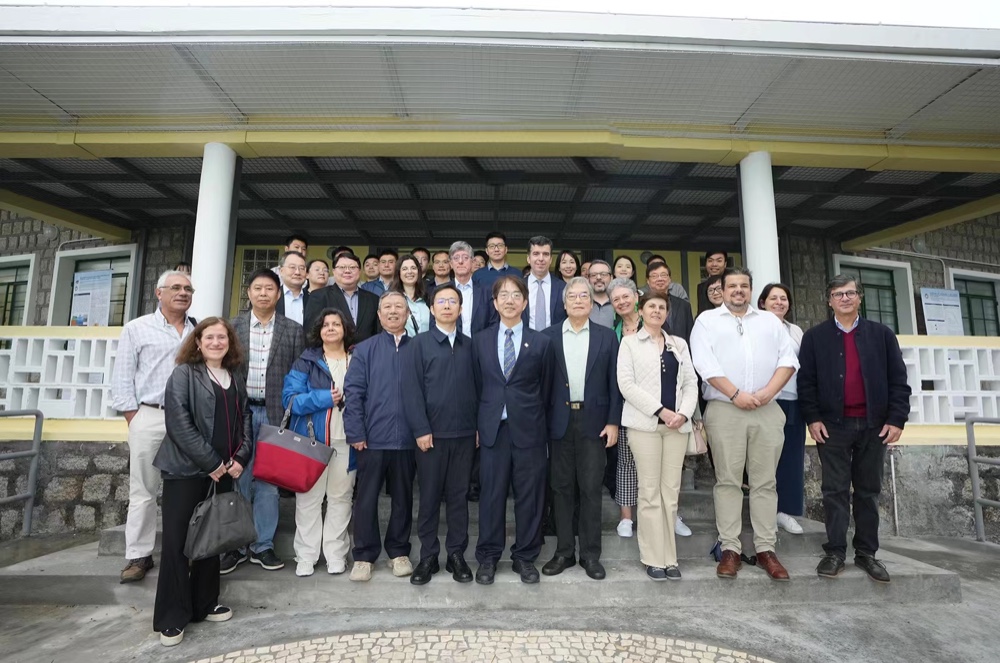
Group photo on-site
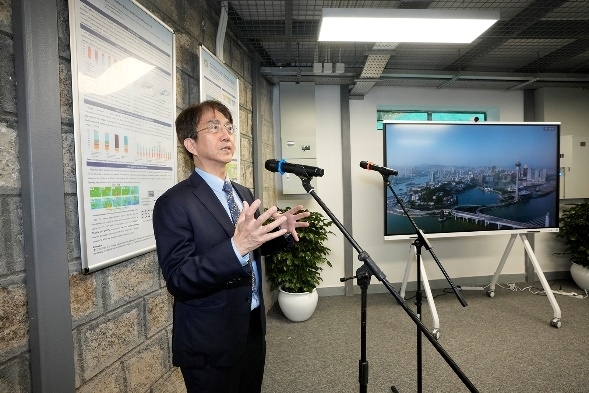
Speech by Chair Prof. Joseph Hun-wei LEE, Vice-Chancellor and President of M.U.S.T.
Afterward, Professor Yibing Ma, the Head of the Macao National Station, introduced the construction and operation of the Macao National Station to the public. Aiming at the forefront of international science and technology and coastal ecological and environmental issues, the Macao Field Station has established “one platform”, namely a platform that carries out the “intelligent, informative, in-situ automation, sky-earth-sea integration” monitoring; established “one pipeline”, namely an important channel for international academic exchange and scientific and technological cooperation, especially among the “Belt and Road” countries; and established “three bases” to implement the application for demonstration of scientific research achievements, training of outstanding talents, and science popularization bases set up in Macao. In addition to carrying out the field scientific observation, Professor Ma stated that the Macao National Station also focuses on new monitoring technology and early warning, the mechanism and impact of ecological-environment issues, the prevention and control technology of compound pollution in coastal environments, and the response plans for common disasters such as flooding.
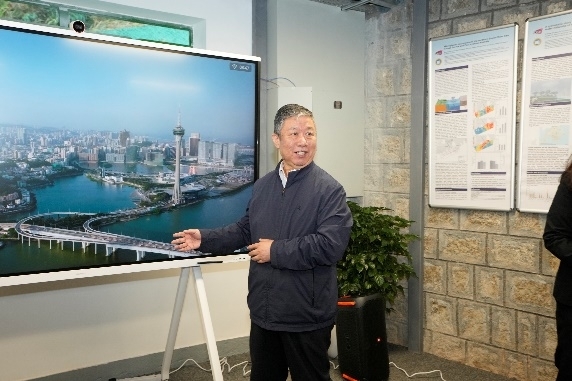
Introduction by Professor Yibing Ma
Forum guests and faculty members of the DESE of FIE continued to visit the famous Hac Sa Beach near the Macao National Station. Assistant Professor Yanfu Wei from the Department introduced the formation mechanism of Hac Sa Beach and the latest research progress of his team to the guests. He pointed out that the black sand originates from glauconite, which is the most abundant clay mineral in sediments. However, how the black glauconite formed is still unclear. Additionally, the black sand on this beach has continued to turn yellow in the last two decades, which has posed a great challenge to Macao. Therefore, studying the formation and transformation of glauconite is also one of the main topics of the Macao Field Station.
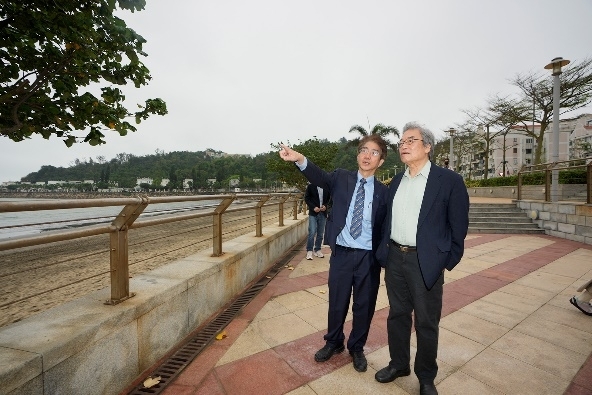
Field visit to Hac Sa Beach
Later, M.U.S.T. leaders and forum guests visited the Science and Technology Development Fund of the Macao SAR Government to learn about the work of the Government in terms of Sino-Portuguese science and technology exchange, science and innovation environment construction, and the construction of an international science and technology innovation corridor in the Greater Bay Area. Subsequently, the forum guests visited multiple institutions, enterprises, and key infrastructure projects in the Greater Bay Area, such as the Hong Kong–Zhuhai–Macao Bridge, to further understand the region’s development.





